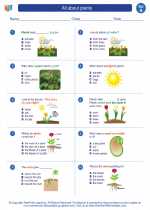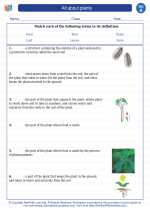Reproduction
Reproduction is the biological process by which new individual organisms are produced. It is essential for the continuation of a species, and there are two main types of reproduction: asexual and sexual.
Asexual Reproduction
In asexual reproduction, a single parent produces offspring that are genetically identical to itself. This can occur through various methods such as binary fission, budding, or spore formation. Asexual reproduction is common in many single-celled organisms and some multicellular organisms such as plants and fungi.
Sexual Reproduction
In sexual reproduction, two parents - a male and a female - contribute genetic material to produce offspring that are genetically unique. This involves the fusion of specialized reproductive cells called gametes - sperm from the male and eggs from the female. Sexual reproduction allows for genetic variation and is the predominant form of reproduction in most animals and many plants.
Study Guide for Reproduction
- What is reproduction?
- What are the two main types of reproduction?
- Explain asexual reproduction.
- What is sexual reproduction?
- Why is sexual reproduction important?
Reproduction is the biological process by which new individual organisms are produced.
The two main types of reproduction are asexual and sexual.
In asexual reproduction, a single parent produces offspring that are genetically identical to itself. This can occur through methods such as binary fission, budding, or spore formation.
In sexual reproduction, two parents - a male and a female - contribute genetic material to produce offspring that are genetically unique. This involves the fusion of specialized reproductive cells called gametes - sperm from the male and eggs from the female.
Sexual reproduction allows for genetic variation, which is important for the survival and adaptation of species to changing environments.
Understanding the different types of reproduction is fundamental to understanding the continuation and diversity of life on Earth.
[Reproduction] Related Worksheets and Study Guides:
.◂Science Worksheets and Study Guides First Grade. All about plants

 Worksheet/Answer key
Worksheet/Answer key
 Worksheet/Answer key
Worksheet/Answer key
 Worksheet/Answer key
Worksheet/Answer key
 Vocabulary/Answer key
Vocabulary/Answer key
